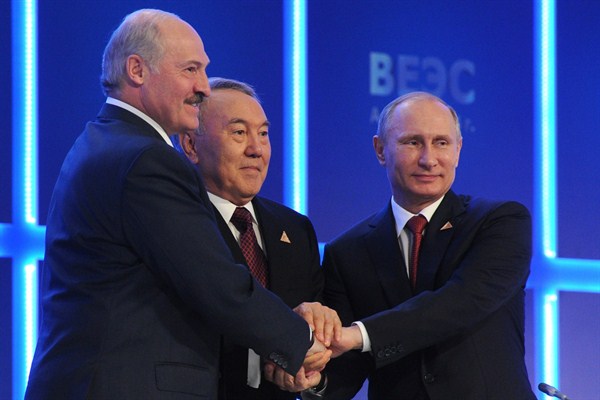The war in Afghanistan has been both a boon and curse for neighboring Central Asia. The conflict placed this sparsely populated region, long disconnected from the globalization taking place around its borders, on the front lines of the international community’s 15-year effort to stabilize Afghanistan. Central Asia became a staging point for coalition military forces, a transit corridor, a donor as well as a recipient of aid and at times a pawn in a larger strategic competition playing out between the United States and Russia. The region also found itself on the receiving end of Afghanistan’s noxious exports: extremism, drugs and crime.
Today, with the war in Afghanistan—or at least the international community’s direct participation in it—winding down, Central Asia’s leaders worry more and more about the prospect of instability both at home and next door in Afghanistan. While extremism has long simmered beneath the surface in parts of Central Asia, the changing political landscape in Afghanistan—and Pakistan—coupled with the rise of the so-called Islamic State in the Middle East is stoking fears of renewed unrest. Though the five Central Asian states are politically diverse, the region’s authoritarian regimes are responding to the threat by becoming more insular, feeding a vicious circle.
Even as Central Asia’s leaders seek to tighten control, outside powers aim to open up the region through integration into a wider Eurasian trade and transit network. The United States, Russia and China are each pursuing ambitious schemes to connect isolated, landlocked Central Asia to larger economic centers. All three major powers view such integration as an antidote to Central Asia’s underdevelopment, which contributes to the region’s political volatility. At the same time, a larger geopolitical agenda underlies Beijing, Moscow and Washington’s respective Eurasian visions. These integration schemes are all highly ambitious. If successful, they offer Central Asia a path to economic development and modernization that has eluded the region since independence. Yet all face obstacles, both within Central Asia and without.

